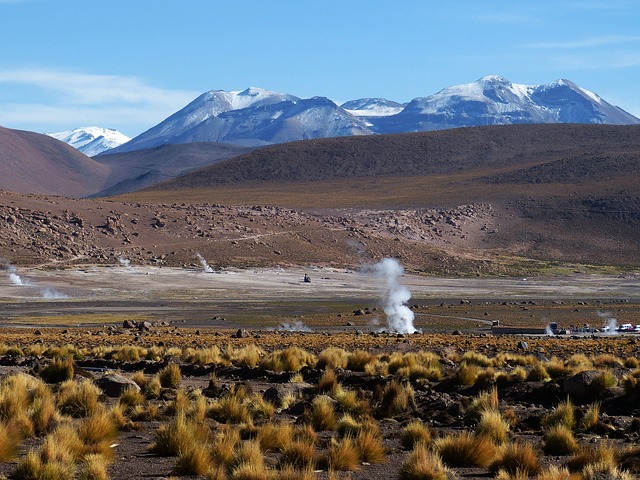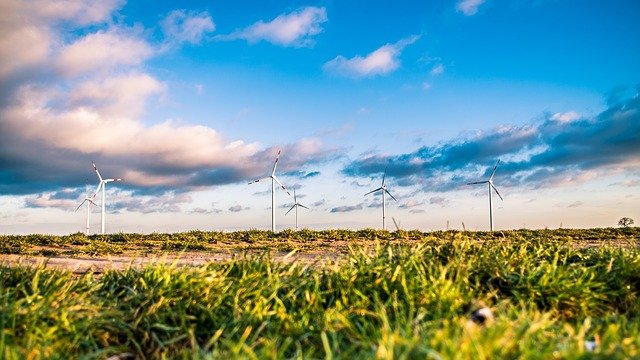
There is a real rush on in the alternative energy markets of the world; each advocate promoting their own particular power system that is going to power us into a future green new world.
Geo-thermal energy systems, versus the windmills cropping up everywhere – what would you choose as an environmentally aware individual?
Besides these two, there are many choices to make when it comes to reducing your carbon footprint, both for governments and individuals who wish to both save money and help the planet recover from centuries of carbon fuel burning.
Geothermal energy and windmills are currently fairly high up there in the list of alternative energy sources, both of which score well on the pollution scale of things – or so it would seem!
How do they compare though, not only against one another; but also against the likes of solar panels or bio-energy systems? There is much talk about the magnetic motor generator as well as the potential to make energy for free from your own mini-hydroelectric scheme; if you are fortunate enough to have your own land with a running source of water in it!
Some Comparisons between geothermal and wind energy for commercial installations:
Geothermal Power vs Windmill System:
- Plus: Needs little space compared to the hundreds of acres needed for a wind farm.
- Minus: Has to be constructed near a place of sufficient thermal activity.
- Plus: Does not depend on the weather to produce power, unlike a windmill that needs a constant breeze to produce power.
- Minus: Can be very technical and expensive to set up averaging $4 million for 1MW of power compared to $2 million for wind farm.
- Plus: production of 80-90% much higher than a windmill at only 25-40% thus offsetting installation costs.
- Minus: Maintaining a sustainable rate of production can be difficult, with steam losing pressure over time.
- Plus: Little damage to the environment during construction, unlike a wind farm which require approx 300 cubic yards of concrete for each windmill; plus the construction of a road system to serve them.
- Minus: The process of drilling and pumping can release hazardous gases such as carbon dioxide, hydrogen sulphide or methane – which have to be dealt with. Along with sulphur, mercury, arsenic and others.
- Plus: geothermal requires no fuel to provide you with energy, unlike coal stations or even biomass energy systems.

The Domestic energy solution:
Domestically geothermal power is arguably the most efficient and cost effective of all the natural energy sources available today. Mainly however it is harnessed not to provide electrical energy, but instead to provide domestic hot water through the use of a geothermal pumping system.
Once installed, Geothermal requires very little in the way of maintenance and is an incredibly reliable source of cheap hot water. The main downside is that you must have enough land in order to make it possible, if you are using residual ground temperature alone to suppliment your hot water requirements – or indeed be sitting above an active geothermal hot water source.
The domestic windmills on the other hand, of the kind that you may pick up from your local DIY store are invariably not very efficient, as a home wind turbine needs a steady constant wind blowing at around 5m/s or more to create a reliable source of energy.
With the smaller DIY turbines a rise in wind speed will result in the turbine cutting out for safety reasons; leaving you without power just when you thought there was wind enough for plenty! Batteries are relied upon to produce stored energy when the windmills are not producing themselves.
Also, unless they are mounted on a pole well away from the house, there can be a fair amount of noise pollution – especially if they are mounted on the side of a timber structure.
Summary:
On both the commercial side and the domestic side of the argument regarding geothermal vs wind energy it has to be admitted that a lot depends on the extent of the grants that the individual government use as incentives as they push to comply with the Kyoto agreement; which commits its signatories to reduce their greenhouse gas emissions by 5.2% from their 1990 level by the target period of 2012 – now upon us!
Main advice here is to check out the other alternative energy options available, and the grant systems in place at the time, before any decision is made as to your choice of a reliable and cost effective renewable energy system.
Recent Posts
The imminent energy crisis has become a great source of concern in these days. Conventional forms of energy cause a lot of environmental pollution and a good number of people have started using...
There are many controversial issues surrounding the whole concept of a ‘carbon footprint,’ not the least of which being that a country or business can buy the ‘clean footprint’ of another...